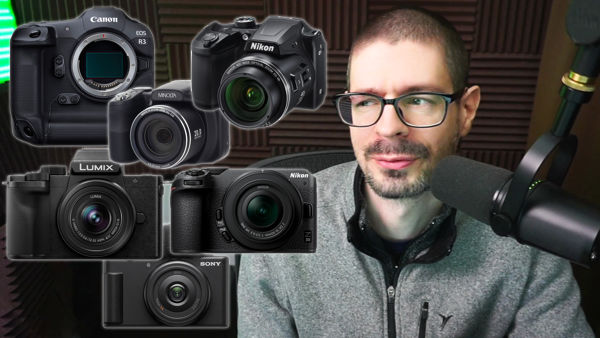While cameras have overall reached a high level of quality and it’s hard to go wrong in many situations, I see issues that especially damage a potential or new customer’s interest in getting into dedicated cameras. As the market shrinks, I think these issues as exasperating the problem.
Maybe it’s largely the fault of marketing, but often I see camera companies release equipment that functionally falls short of how it is targeted toward potential purchasers. This has been very true of what camera companies have been saying are vlogging cameras.
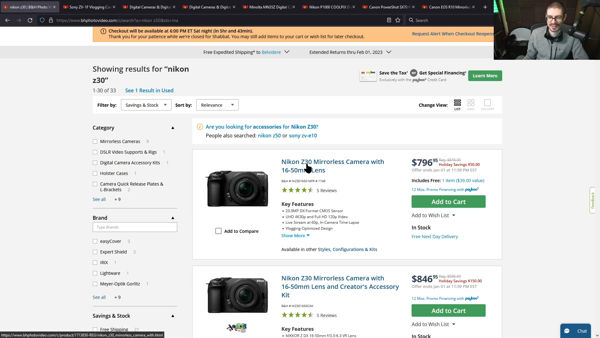
While the proper technology very much exists from many of the manufacturers, they’ve so far chosen to not offer something with a combination of features that would provide a quality experience for users in addition to offering a noticeable higher quality result than a recent smartphone for that task.
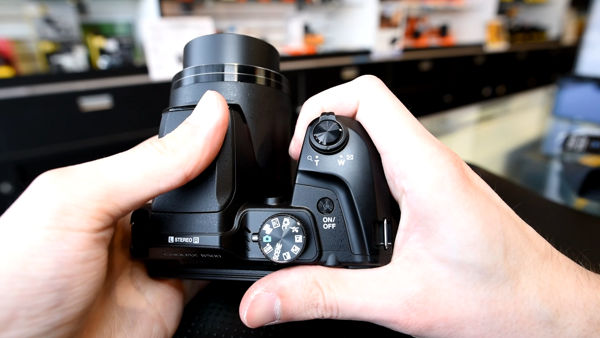
Do they not understand what’s needed, is it marketing, or maybe they want to hit an arbitrary price point? I don’t know but I hope they start taking more care with offering geared toward the entry level market.
Every new person that gives dedicated cameras a chance and has a bad experience is ultimately causing harm to this type of tool. Long gone are the days when the only option you had was a 1/2.3″ camera for photography. No one is going to bother using a specialized tool if it doesn’t do the job correctly and higher quality than a phone.
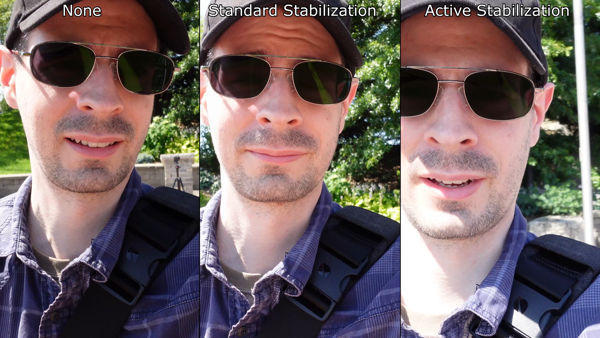
It’s not all about the entry level market either.
With cameras like the Canon EOS R3 that mixes memory card formats… There is the argument that having two different card formats is meant to help a person deal with local availability of CF Express Type B cards if some type of accident happens on-site.
I agree with the idea, but the better solution is what Sony does with their pair of double format CF Express Type A slots that can also both take SD cards. That way people can use the faster card and fall back to SD for both slots if they absolutely have to.
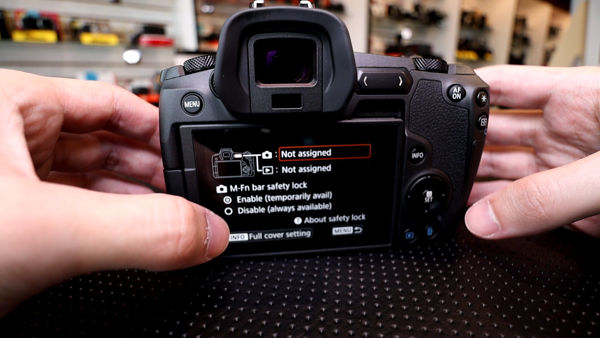
My point is that a mix of large features in the case of entry level models and small features for more advanced models do make a noticeable difference in user experience.
I’m hoping that camera companies take into consideration customer experience more in the future. More so on the entry level side because they have real competition compared to smartphones, but it can apply to every level of dedicated camera.
Related Video Transcript:
Are half-hearted cameras
https://youtu.be/7ZYo-13CSMU
hurting the camera industry?
From small digicams that still exist to vlogging
cameras that really don’t do vlogging very well
and then also more advanced cameras with
weird mixtures of memory cards and features.
Of course in the comments if you want to voice
your opinion feel free I will potentially…
Hit my chair first and then respond.
Most obvious one I’ve seen recently is
with all of these vlogging cameras…
At least the marketing
companies… marketing companies?
You’re getting out, you’re moving around…
The camera needs to be able to deal with motion.
Sensor based stabilization and a lens,
at least one lens in the system that allows
you to have, you know, good stabilization
inside of it with a wide focal length.
Gonna start by picking on Panasonic with their
G100 that they really push towards that.
12 millimeter lens to start off.
I don’t think you can buy this
just body only, so you’re going
to get that lens and it’s a 2x crop factor.
Can work but then the camera doesn’t have
any stabilization inside, and then Sony does
the same exact thing with their ZV cameras.
I actually like the idea of the ZV-E10.
It’s just… it’s old technology in there.
It doesn’t have sensor-based stabilization and
even 30 frames a second 4K is a additional crop,
so if you want to do actual vlogging you do
have some lens options on Sony which is nice.
The older 10 to 18 millimeter I think is probably
the best option but they’re newer lens that
basically replaces it does not have stabilization,
so I don’t understand the logic there.
There’s ZV-1 which is the first one inch one
type one, whatever you want to call it, camera.
Again with the lens focal length it wasn’t
wide enough to really do vlogging that
well because you would want to be using
digital stabilization in addition to,
I think it has lens stabilization in this case?
You just don’t get there and then their response
was slightly cheaper yet worse ZV-1F camera. It
just doesn’t make sense to me why they would go
halfway with it when they are spending
the time to put a new lens in there.
Then they use an old sensor that doesn’t do
phase detect and then the lens doesn’t have
stabilization in it, so you’re going to
be relying on the digital stabilization.
In addition to the contrast based autofocus
on the 1F it also has really bad rolling
shutter performance, which is something
when you’re doing vlogging you need a
quick readout on the sensor so it looks a
little bit better, or a lot ..a lot better!
Sony please it doesn’t make sense!
With these unusual camera releases
that don’t really make sense in
practicality, of course it can work.
It doesn’t mean it’s going to work very well.
It doesn’t mean it’s going to work a lot
better than a phone, so when you
can bring someone in from just
having a phone they want a dedicated camera.
The idea of wow this thing can really do a
great job potentially for me compared to my phone,
and then they buy something like that ZV-1F camera
and they find out wow it looks really bad it’s
focusing off because it has it doesn’t use phase
detect once they learn about the differences
between different types of autofocus systems.
And then they’re stuck with this expensive
camera, but then they start using their phone
more and more again or they upgraded
their phone and that’s even better.
Just a few things they could have done to
really let that camera shine compared to the
phones or whatever!
One inch or type one
cameras in general seem to be pretty expensive.
Although this is at a nice discount at the moment.
I don’t think many of these type
one one-inch sensor cameras have
phase detect in them like the G7 series.
I don’t think the Panasonic ones do as well.
The Sony at least some of the later
Sony’s do, but the price of something
like the RX100 Mark VII, 1300 dollars!
Is it really worth that much? I don’t know.
If a new person comes into dedicated cameras.
They see all these and they say you want thirteen
hundred dollars for this thing with a pretty
nice zoom lens, you know it looks functional…
but they wouldn’t even suggest the idea
to themselves to spend that much money.
Then they look at the 1/2.3 inch sensor cameras.
They think “oh these are a little bit more
reasonable”. Is this gonna do what I need?
And chances are there’s a big nope!
Or they see something like
these Kodak junk cameras…
Something like the Coolpix B500.
That’s my most popular
video on the YouTube channel.
It’s not to say that it’s a terrible camera.
It’s not to say that it’s the worst thing
ever and at least in this case the zoom
lens in there can get you better photos from
distance compared to pretty much any phone
except for some of the phones actually
have optical zoom lenses in them now.
However the autofocus.. everything
about this is just not great.
The funny thing is that they had a B600
but they discontinued that because it
was worse in many ways than the B500…
Where people want to get into dedicated
cameras they get in they spend that money
and then they have a bad experience.
Mirrorless cameras, the Canon RF
system, they added aps-c cameras.
You got the R10 and R7, but then they
release two very unexciting lenses from EF-M.
They revised them and both of them
started at 18 millimeters. The EF-M lens
started at 15 millimeters, which is
a good thing for many situations.
Getting that wider focal length was nice, where
a person wanted to do vlogging with the R10 or
something like that, but they have 18 millimeters.
They have no sensor based stabilization and
they’re not going to be buying the R7.
I think a lot of it might come down to cost
factors, manufacturing situations…
all I can do is speculate on that.
The monstrosity camera Coolpix P1000. I
used one for a very short amount of time.
It is amusing but it’s massive and I guess
it serves a very specific niche purpose…
Here’s another thing that
messes up the camera industry.
Minolta fake brand, I had actually… this
was at my local camera shop for a while.
You can’t buy new batteries for this thing.
I could not find them anywhere.
This thing is selling and it’s getting..
people, people are interested in this camera.
They come to my video specifically
for this somehow and then it’s just
a really bad experience for the user.
Canon ergonomics have been changing a
lot lately on their mirrorless cameras,
which is good in a way, but also bad.
The good thing is that they’re trying
new ideas and it doesn’t always work
with the original EOS R camera.
They had that slidey thing “which
some people might lok”, “might lock?”…
some people might like, but a lot of
people from what I saw did not like that.
I like the idea of this camera because
it has the two uniform memory card slots.
Two SD card slots… They’re simple they work.
Easy to find anywhere.
A lot of cameras, especially the higher end ones
offer you two different slots and I’m not sure…
Maybe some people like and prefer
having two different memory card types?
Personally I don’t find that appealing at all.
I had no idea the Z9 has two of the same slot. I
thought it had different slots but it does not!
Has the CF Express type B,
two of them. That’s cool!
So in this case when you’re going
high end you want the best of the
best they give you two of the best.
So in this case I’m very confused.
You’ve got a six thousand dollar R3 camera.
Has two different memory card types.
Why you do the Z9 thing, zed 9 thing, and give
you two of the fastest instead of one of the
average and uhh one of the fast…
Wow, they fit a lot of stuff in here.
Dual CF Express type A SD cards, so it’s the
smaller ones that are a little more expensive
less capacity but they’re consistent!
Totally forgot about the Nikon Z30.
This is another one where they kind
of half-heartedly created this thing.
They chopped off the Z50’s viewfinder…
At the very least the Nikon comes with a 16
millimeter lens, however the camera does not have
sensor-based stabilization in it. So you’re gonna
have to use some type of digital form of it.
Another thing it doesn’t have h.265 as far
as I remember…
All that said,
camera companies please try to implement
features in ways that excite and impress users.
Impress people coming into dedicated cameras,
so that they don’t come in… have a bad
experience and then leave.
That hurts everyone!
That hurts people that are into cameras, dedicated
cameras.. photography, videography and want to see
this industry grow and get larger again.
And it hurts them because they end up
getting a returned camera.
They end up getting just a
bad customer experience where that person
is no longer going to buy any lenses from
them or anything related, no accessories.
Maybe it’s about costs maybe it’s about
just getting a new refresh quickly?
Maybe it’s just they’re not seeing
these small things that some of us do
notice, who knows! Uhh ,in the comments
if you want to voice your own opinion feel
free I’ll be reading the comments as usual.

